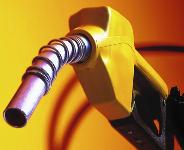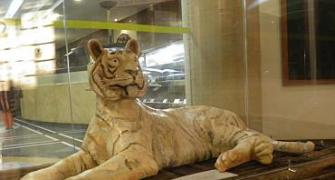 While the consumers are unhappy with the regular price rises in petrol and the oil marketing companies -- Indian Oil, Bharat Petroleum and Hindustan Petroleum -- are worried about being unable to pass on the full hike in spite of decontrol, it is the states who are laughing all the way to the bank.
While the consumers are unhappy with the regular price rises in petrol and the oil marketing companies -- Indian Oil, Bharat Petroleum and Hindustan Petroleum -- are worried about being unable to pass on the full hike in spite of decontrol, it is the states who are laughing all the way to the bank.A series of rises in petrol price following its decontrol on June 25 last year has increased the state governments' earnings from value added tax on petrol by around 21 per cent.
Based on the monthly sales data of 167.6 million litres petrol in Uttar Pradesh, for instance, the state government was earning Rs 176 crore (Rs 1.76 billion) every month as VAT in May last year.
It now earns Rs 38 crore (Rs 380 million) more every month.
Similarly, in Delhi (for a monthly sale of around 100 million litres), the government was earning around Rs 80 crore (Rs 800 million) every month as VAT before the decontrol. This has now increased to Rs 97.3 crore (Rs 973 million).
The Rajasthan government's monthly VAT collection on petrol is estimated to have increased from about Rs 87 crore (Rs 870 million) to Rs 108 crore (Rs 1.08 billion).
All state governments levy a VAT on petrol, which ranges from 15 per cent (in Pondicherry) to 33 per cent (in Andhra Pradesh).
For most states, VAT on petrol ranges between 20 and 25 per cent. States like West Bengal, Madhya Pradesh, Maharashtra, Gujarat and Karnataka, among others, also levy some cess or tax over and above the VAT.
| INFLAMMABLE ISSUE | ||||
| City | Petrol price on June 1 '10 |
Component of VAT+ surcharge |
Petrol price on Jan 23 '11 |
Component of VAT+ surcharge |
| New Delhi | 47.93 | 7.99 | 58.37 | 9.73 |
| Mumbai | 52.20 | 11.33 | 63.08 | 13.56 |
| Kolkata | 51.67 | 10.91 | 62.5 | 13.06 |
| Chennai | 52.13 | 11.77 | 63.36 | 14.34 |
| Petrol price in Rs /litre | ||||
Under the current taxation structure, VAT is levied by state governments on an ad-valorem (percentage)
basis. This means when prices are high, the taxation on the products is higher, rendering the product even more expensive.
"At a time of rising prices, ad-valorem taxes have a cascading impact on the retail price of petrol. The state governments should convert the ad-valorem component of VAT into a specific one to provide relief to consumers," said an Indian Oil executive.
Another OMC executive, who did not want to identified, said if the VAT rate had been specific (as against a percentage of the base price), then petrol would have been cheaper by around Rs 2 per litre now.
Between June 25 and now, the petrol price has increased by 21.78 per cent to Rs 58.37 per litre (in Delhi).
The hike has been in line with the rising crude oil prices and international product price.
However, for the last two months, the OMCs have failed to pass on the desired price increase in spite of two steep rises of Rs 2.96 per litre in December and Rs 2.50 about a week ago.
When these companies took a price increase of Rs 2.96 in December, they were still losing Rs 1.25 on every litre of petrol. By mid-January, this loss rose to Rs 3.72 per litre, as international prices continued to climb.
Therefore, even after a rise of Rs 2.50 from January 16, the OMCs continue to lose Rs 1.22 per litre.
Based on the current loss and the estimated 1.28 million kilolitre sale of petrol across the country, the industry is still estimated to be incurring a daily loss of around Rs 50 crore (Rs 500 million) on petrol sales, which will not be compensated by the government since the product stands decontrolled.







